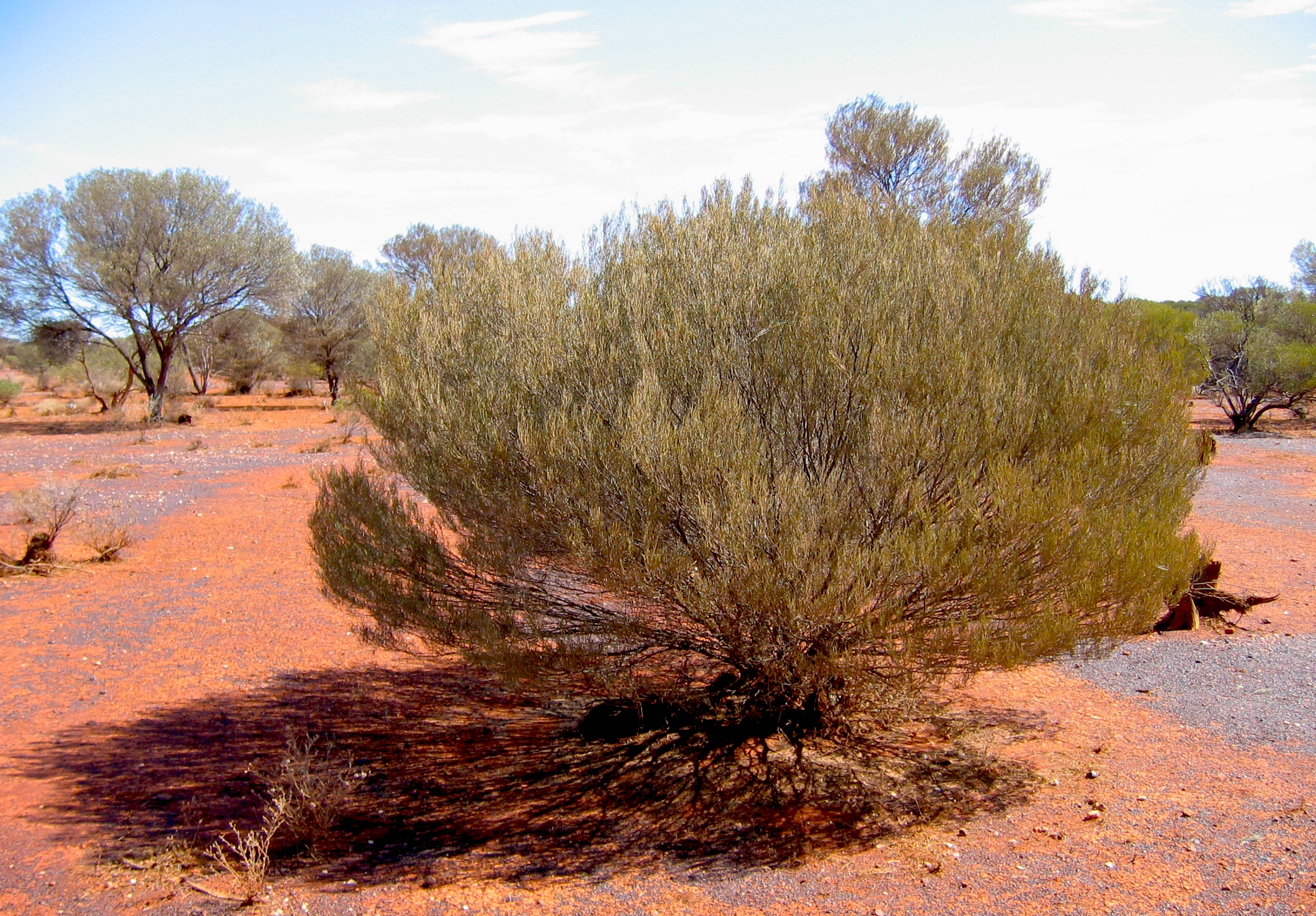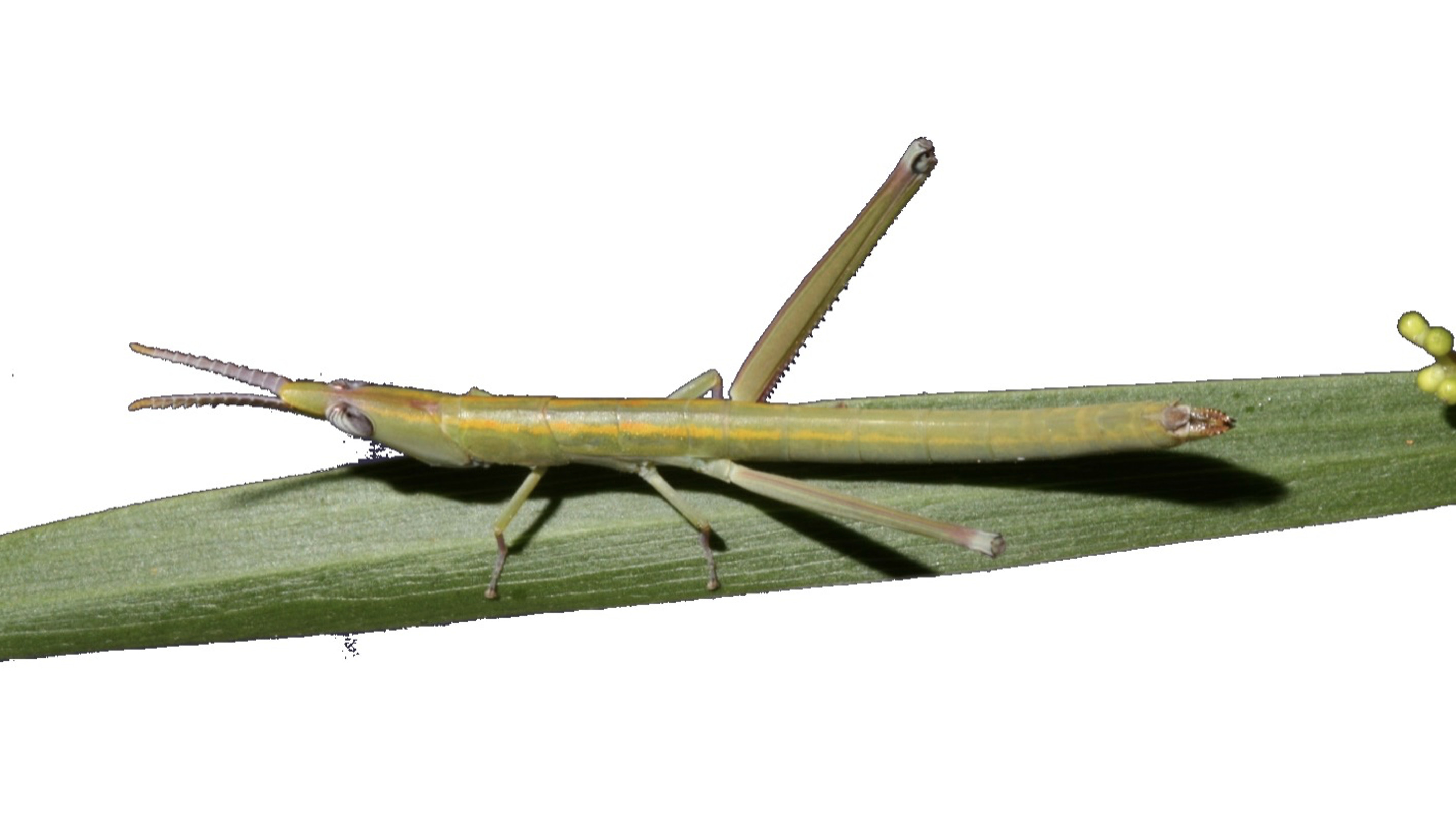
Sciences & Technology
Rediscovering a ‘lost’ species

A unique ‘matchstick’ grasshopper that’s evolved into an all-female species that doesn’t reproduce through sex gives us fascinating insights into evolution
Published 3 June 2022
Most species on Earth have two sexes – male and female – that combine and mix their genes when they reproduce. We are so accustomed to this state of affairs that the existence of an all-female species that doesn’t have sex, but instead reproduce by cloning, comes as quite a shock.
In our research just published in Science, our detailed study of a unique Australian animal finds that the traditional explanation for this state of affairs is likely wrong.

While ‘parthenogenetic’ species – these are animals in which an egg can develop into an embryo without being fertilised by a sperm to reproduce – are extremely rare, some do occur in Australia.
One of these is a beautiful green ‘matchstick’ grasshopper called Warramaba virgo.
This grasshopper feeds on mulga trees as well as other shrubs and bushes in the summertime in the southern parts of the Australian arid zone, which ironically includes the historically male-dominated mining towns of Kalgoorlie and Broken Hill.

Sciences & Technology
Rediscovering a ‘lost’ species
Traditionally, biologists studying evolution have considered the rarity of parthenogenetic species like W. virgo a major puzzle. This is because sex imposes big costs on animal reproduction.
First, there’s the ‘two-fold cost of sex’; males can’t produce offspring by themselves and are therefore often seen as ‘evolutionary wastage’. Moreover, mating through sex can be dangerous because the energy these animals expend in finding a mate and mating often comes with a greater risk of predation.
So doing away with males removes this risk.
The main reason why sex is thought to exist relates to the mixing or ‘recombination’ of genes as a consequence of sex.

This can speed up the rate of adaptation by bringing favourable combinations of genes together – helping to purge a population of combinations of bad mutations.
In the absence of these sexual processes, parthenogenetic species might not be able to adapt when the environment is changing and organisms encounter new parasites, competitors and so on. They could also accumulate bad mutations that further reduce their fitness.
But are these costs real and are they resulting in the rapid extinction of any parthenogens?

Sciences & Technology
The grasshopper that was lost, then found, is now endangered
Over the past 18 years, we have been investigating these questions in the matchstick grasshopper Warramaba virgo.
This parthenogen was first studied in 1962 by the eminent evolutionary biologist and geneticist Professor Michael White. His young son Nicholas first discovered them near the New South Wales town of Hillston and informed his father that he couldn’t find any males.
Professor White confirmed them to be parthenogenetic and went on to show that the same species was present 2,000 kilometres away in Western Australia, along with a sexual species (recently named W. whitei).
W. virgo turned out to have a hybrid origin – a cross between W. whitei and another species, W. flavolineata, many thousands of years ago.

It’s possible that the parthenogenetic species formed from the hybridisation of the two sexual species could have an advantage if there is a sudden boost in their genetic diversity through repeated hybridisation that produces an army of different clones, or if the parthenogens become more vigorous due to combining different genomes (the complete set of DNA, including all of the genes) of two species.
This kind of hybrid vigour (that is, the superiority of the hybrid over either parent in one or more traits) occurs in some animals like the mule, which is a cross between a horse and a donkey. The mule has much greater strength and endurance than its parental species.

Sciences & Technology
Grasshoppers: The new poster bug for insect conservation
Could it be that hybrid origins in W. virgo generate a diverse clone army with special abilities compared to its sexual relatives or a hybrid with a high level of vigour?
We found that the answers to these questions were a resounding ‘no’.
We investigated genetic diversity in W. virgo by using modern molecular markers called single nucleotide polymorphisms (SNPs). We examined more than 1500 of these markers and found almost no variation in the parthenogens compared with the sexual species.
This tells us that only one hybrid mating between W. whitei and W. flavolineata was responsible for producing W. virgo in the first place – some 250 million years ago – an estimate we based on the number and nature of mutations that had accumulated in the parthenogen.

We also found that the parthenogen did not have an advantage over the two sexual species from which it originated for a whole range of physiological traits including their tolerance to heat and cold, their rate of metabolism, how many eggs they lay, the size of their eggs, how long they take to mature and how long they live.
Meanwhile, W. virgo still produced twice as many females as the sexual species, so clearly retained the two-fold advantage over sexual species despite 250 thousand years of low fitness mutations that accumulated in this species.

Sciences & Technology
How do we protect our unique biodiversity from megafires?
The conclusion from our research is that W. virgo has become parthenogenic but without costs, and it has successfully spread from the west side of Australia to the east side – unlike the sexual progenitors.
So, why then do we see sexual species everywhere despite their two-fold reproductive cost?
We suspect that it must be very difficult to develop parthenogenesis in the first place.
Indeed, we have tried crossing the same sexual species that gave rise to W. virgo and only created a few hybrids, none of which were able to produce offspring. The hybrid state may disturb the normal processes of egg development sufficiently to make parthenogenesis an extremely uncommon phenomenon in animals generally.

Any future research into the paradox of sexual reproduction should focus on barriers that prevent sex from being lost rather than only focusing on the advantages of sex.
And there are no doubt other unique but unstudied Australian insects that can teach us a lot about sex and evolution.
A version of this article was co-published with The Conversation.
Banner: Faces of Warramaba virgo (middle) and the two sexual species that hybridised to give rise to it, W. whitei (left) and W. flavolineata (right)/ Picture: Michael Kearney